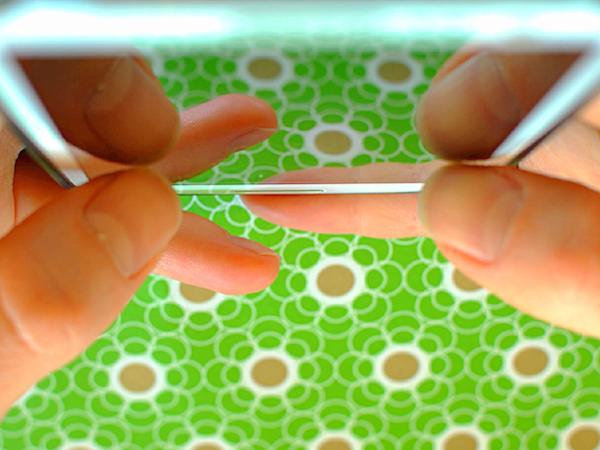
[Image above] Could a new polarizer allow brighter screen displays with less battery drain? Credit: Lee Royal; Flickr CC BY-NC-ND 2.0
We’ve all experienced the frustration of a quickly draining device battery (#firstworldproblems).
The first thing that I do when my laptop battery gets into the red is instinctively drop my screen brightness all the way down to the last bar above total blackout. Experience tell me that alone will make what little juice I have left last a whole heck of a lot longer.
That’s partially because LCD screens—be they in your computer, smartphone, tablet, or other device—are rather inefficient in their energy usage.
Device screens are equipped with polarizers that neatly arrange light waves, blocking out those that aren’t in a particular plane, to make the display look so great. Polarizers are rather simple—they block out all light that approaches the screen at perpendicular angles—but that also means that they waste a lot of light.
But what if you could rearrange, rather than block, the orthogonal lightwaves?
Researchers at the University of Utah have designed a new metamaterial polarizer that does just that—it redirects, rather than stops, incident light waves. Their development has potential to make future devices much more energy-efficient.

Rajesh Menon holds an etched piece of silicon. Credit: Dan Hixson; University of Utah College of Engineering
The results, published in Optica (full article available), detail how researchers used focused-ion-beam lithography to fabricate silicon polarizers. The process used gallium ions to etch nanoscale pillars and holes onto smooth silicon wafers.
Unlike the smooth surface, the patterned surfaces could align infrared 1550 nm-wavelength lightwaves to achieve a transmission efficiency of about 74%—a significant improvement over standard screen polarizers, which let less than 50% of light pass through.
If the researchers could now do the same for visible lightwaves (a feat they are working on), this research could be quite useful for the electronics industry and more.
“If one can increase that energy efficiency, that is a huge increase on the battery life of your display. Or you can make your display brighter,” Rajesh Menon, senior author and Utah electrical and computer engineering professor, says in a Utah press release.
Polarizers are also an important component of cameras, where they reduce glare but also allow less light to pass through camera lenses. So more efficient polarizers would get big cheers from photographers, too.
According to the release, the researchers say such high-efficiency polarizers could be available in five to 10 years.
The paper is “Ultra-high-efficiency metamaterial polarizer” (DOI: 10.1364/OPTICA.1.000356).
Author
April Gocha
CTT Categories
- Electronics
- Energy
- Material Innovations


